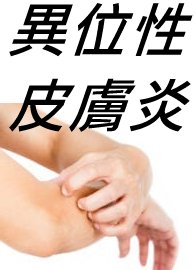search
subject
| symptom | Continuous Lochia |
smart_toy
bubble_chart Concept
The stagnant and turbid blood discharged from the vagina after childbirth is called lochia. It should generally be completely discharged within about twenty days postpartum. If it continues to flow beyond this period, it is referred to as "persistent lochia," also known as "lochiorrhea."
bubble_chart Pattern Analysis
- Qi Deficiency︰Persistent lochia, excessive in amount, pale in color, thin in texture, and odorless, with lower abdominal distension. Mental fatigue, or sweating, fear of cold. Tongue texture pale or swollen, pulse slow and weak. Often due to constitutional weakness, or spleen deficiency during pregnancy, insufficient middle qi, or loss of blood and qi depletion during childbirth, or prolonged labor, or postpartum overexertion, depleting healthy qi, resulting in qi deficiency unable to retain blood, weak Chong and Ren meridians, and poor contraction of the uterus with appendages; it is advisable to greatly tonify qi, using the Qi-Tonifying Uterus-Contracting Decoction.
- Blood Stasis︰Persistent lochia with a dark purple color, occasionally containing blood clots (sometimes resembling rotten flesh), accompanied by lower abdominal pain that resists pressure or palpable masses. The tongue appears dark or with ecchymotic spots, and the pulse is deep-thin or deep-hesitant. This is often due to static blood stagnation in the uterus and its appendages, or postpartum exposure to cold, leading to the binding of cold and blood, retention of lochia, and obstruction of new blood from circulating through the meridians, resulting in lochiorrhea. Under certain conditions, these two conditions can transform into each other. Uterine atony may lead to static blood stagnation, and static blood stagnation may also cause uterine atony. Therefore, deficiency and excess patterns often coexist clinically. The key points for pattern identification are: if the lochia is profuse and pale in color, with lower abdominal distension but no pain, and a slow-weak or thin-rapid and feeble pulse, it indicates qi deficiency. If the lochia is turbid or resembles rotten flesh in appearance, with lower abdominal pain that resists pressure or palpable masses, it indicates blood stasis. The treatment principle should focus on invigorating blood and resolving stasis, using the Uterine Contraction and Stasis-Resolving Decoction. If both patterns are present, the treatment should be adjusted accordingly.
- Blood Heat︰The lochia is continuous, bright red in color, thick and sticky in texture, and may have a foul odor. There is abdominal pain that resists pressure, or intermittent low-grade fever, or dry mouth and throat. The tongue is red or pale (in cases of blood deficiency), with scant coating, and the pulse is thin and rapid or slippery and rapid. This condition is mostly caused by seasonal pathogens invading the uterus and its appendages, where they interact with blood, accumulate, and transform into heat, forcing the blood downward. The lochia is bright red or purplish-red, thick in texture, and has a fishy, foul odor. There is abdominal pain that resists pressure, and the pulse is slippery and rapid, indicating an excess heat pattern. Treatment should focus on clearing heat and cooling the blood, using the Clearing the Pericardium Decoction.
- Yin Deficiency︰Lochia is dripping incessantly, appearing red and thin in quality. There is lower back soreness, dizziness, tinnitus, or tidal fever with night sweats. The tongue is red or pale (in cases of blood deficiency), with scant or peeled coating, and the pulse is thin and rapid. This condition is often caused by constitutional yin deficiency, internal blazing of deficient heat, and blood failing to be retained internally. The clinical manifestations include thin, red discharge, lower back soreness, absence of abdominal pain, and a thin, rapid pulse, indicating a pattern of deficiency heat. The presence or absence of tenderness in the lower abdomen and foul odor are key distinguishing factors between the two patterns. For treatment, it is advisable to nourish yin and clear heat, using Modified Yin-Preserving Decoction. Clinically, after treatment, the blood heat pattern often transforms into a yin deficiency pattern, at which point the treatment approach should be adjusted according to the presenting symptoms.
The disease cause and mechanism of this condition, as well as its pattern identification and treatment, are essentially the same as those of postpartum metrorrhagia. However, postpartum metrorrhagia occurs earlier and is more severe; this condition, on the other hand, can only be established at least three weeks postpartum and is relatively milder.
- Yizong Jinjian.Gynecology Essentials.Postpartum Section: "Postpartum lochia is the dirty blood that wraps around the baby and should be expelled along with the fetus during childbirth. If it does not stop for a long time and keeps dripping, it may be due to deficiency and damage of the Chong and Ren meridians, and the blood is not being retained; or it may be due to incomplete expulsion of stasis, which remains in the abdomen and is continuously expelled as it transforms. One should examine the color of the blood, whether it is turbid and unclear, or pale and not fresh, or foul-smelling, fishy, or filthy, to distinguish whether it is excess or deficiency, and then treat it accordingly. For deficiency, it is appropriate to use Ten Major Tonics Decoction with Donkey-hide Gelatin and Dipsacus to tonify and stabilize. For stasis, it is appropriate to use finger citron powder to tonify and promote movement."






